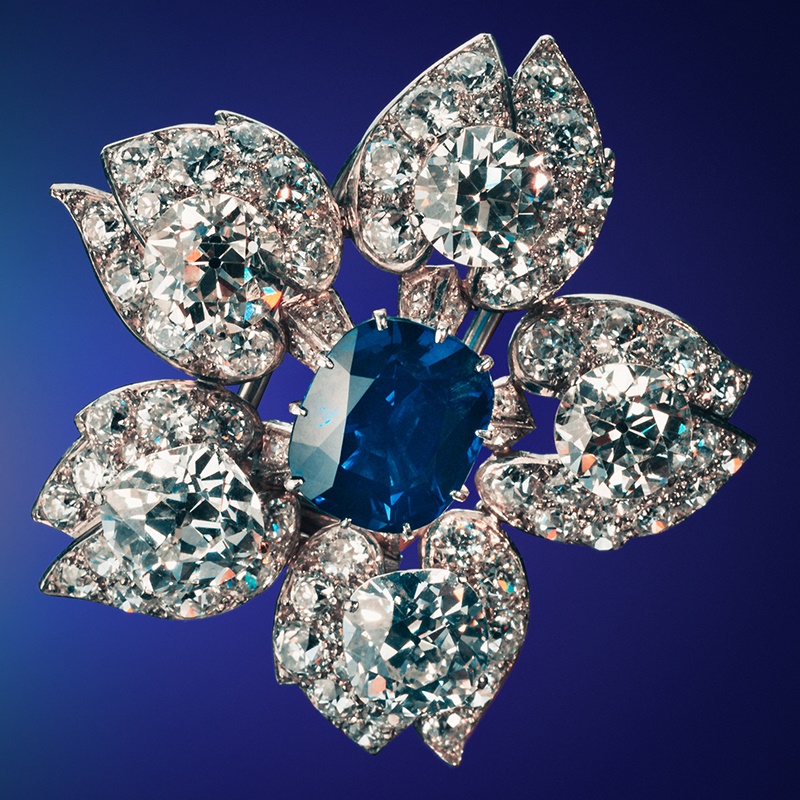How Rare is a Kashmir sapphire?
If there ever was a perfect sapphire, the Kashmir sapphire would be the epitome
07/09/2023
Although most generally thought of as blue, sapphires actually come in a wide range of colours including pink, red, yellow, orange, white and green. The finest quality sapphires have mostly been found in Kashmir, Myanmar (previously Burma), Sri Lanka (previously Ceylon) and Madagascar. Sapphires from the Kashmir mine are the most cherished and highly valued, exhibiting quality and colour intensity superior to any of these other origins, and rightly affording them the title of “King of the Sapphires”.
Sri Lanka has perhaps the longest history of producing sapphires, as far back as the 2nd century, while Myanmar has been supplying sapphires for over a thousand years. Indeed and interestingly, Kashmir sapphires can be considered a recent discovery in comparison.
In 1881 a landslide in the remote snow covered Zanskar mountain range, in the Padar region of the north-western Himalayas, revealed a 100 foot wide deposit of pegmatitic rock with blue crystals. One story tells of a hunter who travelled past the site while searching for a piece of hard rock or quartz to strike a light for his pipe. By chance, he picked up a small sapphire that more than fulfilled his needs, so he held onto it for a while, before selling it to a trader in the nearby district of Lahaul. Local villagers were soon bringing more of these stones to trade for other commodities such as salt. Before long, traders took these stones into Simla where their value was recognised.
In 1882, Mr. Frederick Richard Mallet, a Geologist at the Indian Museum, conducted experiments which revealed and confirmed the gemstone's mineralogical and chemical properties, natural unheated blue sapphires. This led to the Maharaja of Kashmir posting guards outside the mine in an attempt to protect their value. Unfortunately, the mine has unforgiving locality and harsh weather conditions, which made it almost impossible for his troops to stand guard all year round. From 1882 to 1887, the mines were worked day and night throughout the summer months until they were eventually entirely depleted, and mining was halted. Although a new mine was later opened, it was far less successful, meaning that the vast majority of true Kashmir sapphires on the market today, were mined during that short period. To this day, the remote area of the original mine remains heavily guarded by private police to deter thieves from entering and attempting to find one of these legendary gems.
If there ever was a perfect sapphire, the Kashmir sapphire would be the epitome. Their almost legendary status due to their exquisite deep cornflower-blue colour and often silky sheen, together with their extreme rarity makes them incredibly desired and coveted by enthusiasts and collectors alike.
Dawsons are honoured to be offering a spectacular 1930s Cartier Kashmir sapphire and diamond flower brooch, in our upcoming Jewellery, Watches & Silver auction on the 21st of September. Designed as a single bloom of cherry blossom, this brooch features a cushion shaped Kashmir sapphire with an estimated weight of 7 carats, the petals are highlighted with old-cut diamonds with an estimated total weight of 16 carats, and the piece is signed ‘Cartier London’. Cartier was one of the most formidable gemstone authorities at the time that this piece was produced, so it is no surprise that they had access to a sapphire of this calibre.
To arrange a private viewing appointment ahead of our sale on Thursday 21st September, please email us on info@dawsonauctions.co.uk

